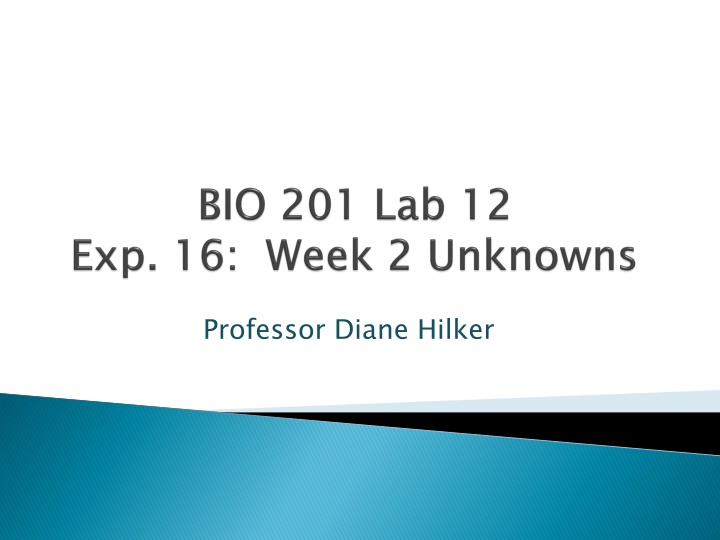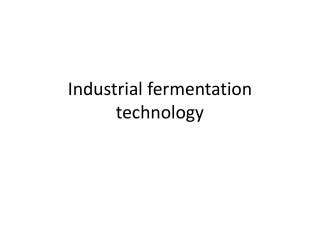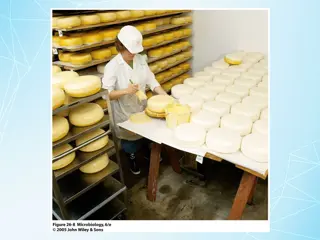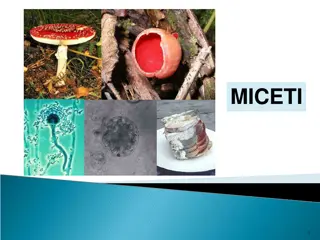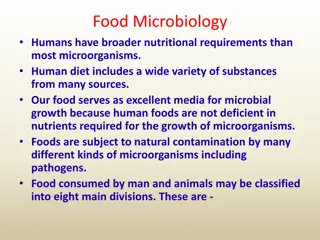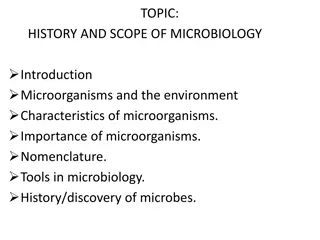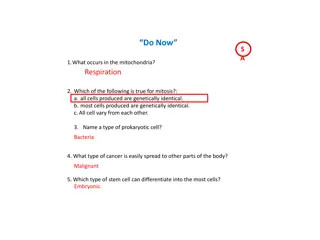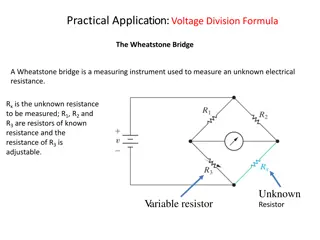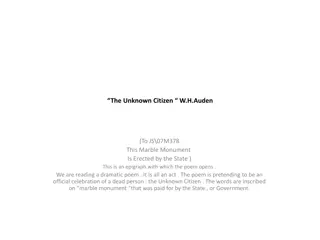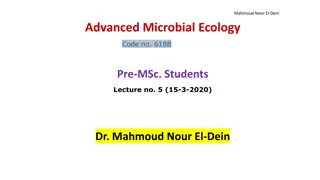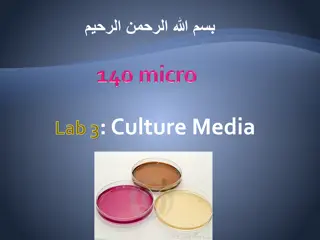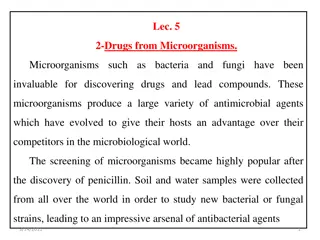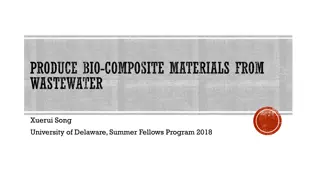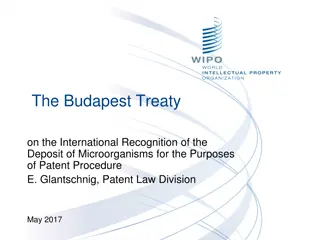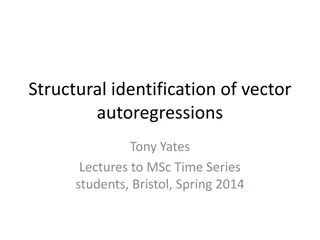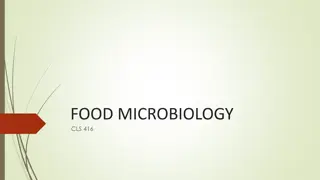Identification of Unknown Microorganisms Exploration
Professor Diane Hilker leads an experiment on identifying unknown microorganisms, delving into optimal temperatures and testing procedures. Explore various species such as yeast, Staphylococcus, Streptococcus, and Bacillus through detailed observations and experiments.
Download Presentation

Please find below an Image/Link to download the presentation.
The content on the website is provided AS IS for your information and personal use only. It may not be sold, licensed, or shared on other websites without obtaining consent from the author.If you encounter any issues during the download, it is possible that the publisher has removed the file from their server.
You are allowed to download the files provided on this website for personal or commercial use, subject to the condition that they are used lawfully. All files are the property of their respective owners.
The content on the website is provided AS IS for your information and personal use only. It may not be sold, licensed, or shared on other websites without obtaining consent from the author.
E N D
Presentation Transcript
Exp. 16: Identification of Unknown Microorganisms Exp. 16: Identification of Unknown Microorganisms I. I.
TODAY: Interpret Temp. Study (Exp. 7 Determine Optimum Temp. Any contaminants in tubes? Observe/Describe Colony Morphology Plate Repeat Gram Stain Does it agree with last week s results? If need be, repeat Wet Mount & Simple Stain Set up the necessary tests for YOU! Incubate at YOUR Optimum Temp. TODAY: Interpret Temp. Study (Exp. 7- -Table1) Table1) Observe/Describe Colony Morphology Plate Repeat Gram Stain If need be, repeat Wet Mount & Simple Stain Set up the necessary tests for YOU!
Yeast Opt. Temp: Dry,white, crusty growth Wet Mount: Yeast Opt. Temp: 5, 25, 37oC Wet Mount: large, ovoid, irregular, budding, Brownian Movement Simple Stain: Gram Stain: stain either purple, pink or both Catalase: No other testing necessary Simple Stain: large, ovoid, irregular, budding Gram Stain: Same as above, cells Catalase: + (bubbles)
Gram Pos. Opt. Temp: Small white creamy colonies Gram Pos. Cocci Opt. Temp: 25-37oC Cocci: : Staph and Strep Staph and Strep Staphylococcus Staphylococcus Gram Pos. cocci in clusters Catalase: Halophile Catalase: +
Streptococcus Streptococcus Gram Pos. cocci in chains Catalase: Not a halophile Catalase: - Today: : Today 1. Do Catalase test (Exp. 15) 2. Inoculate Salt Plate (Staph 110 or MSA)
Gram Pos. Rod: Opt. Temp: Transparent beige colonies Simple Stain: Gram Pos. Rod: Bacillus Opt. Temp: 60oC Bacillus stearothermophilus stearothermophilus Simple Stain: endospores Gram Pos. long Cell wall breaks down quickly & looks pink if not observed in 24 hrs. long rods.
Gram Pos. Rod: Today: Inoculate Starch Plate (Exp. 15): dab the sample in the center of the plate Incubate at 60oC in sealed plastic bag Gram Pos. Rod: Bacillus Today: Bacillus stearothermophilus stearothermophilus
Gram Negative Rods: short rods Opt. Temp: Beige large colonies, may be motile E. coli Pseudomonas-may have a little growth at 5oC, yellow-green pigmentation of media Serratia- pink at 25oC Enterobacter Citrobacter Proteus Gram Negative Rods: short rods Opt. Temp: 25 -37oC
Gram Negative Rods Today (Exp. 15): PRLB PRDB Tryptone Broth MRVP Broth Urea Broth Simmons Citrate Slant TSI Slant-Stab the bottom of the tube with inoculating needle Gram Negative Rods Today- -Inoculate ALL of the following tubes (Exp. 15): Inoculate ALL of the following tubes
